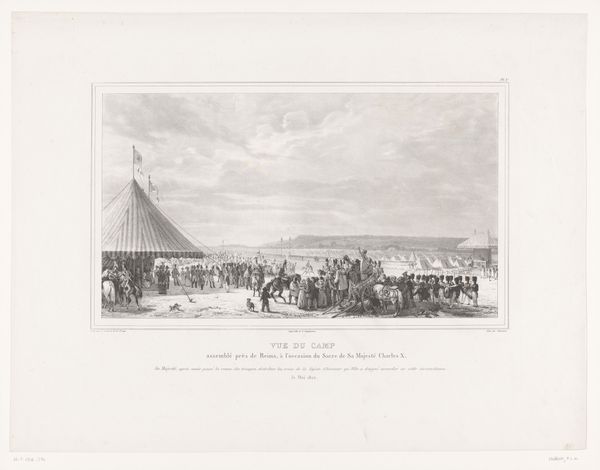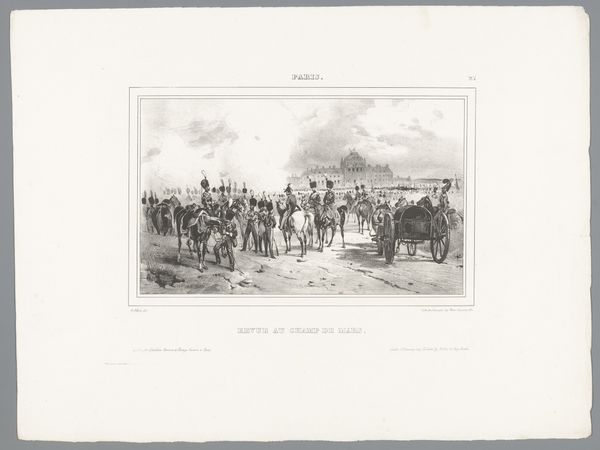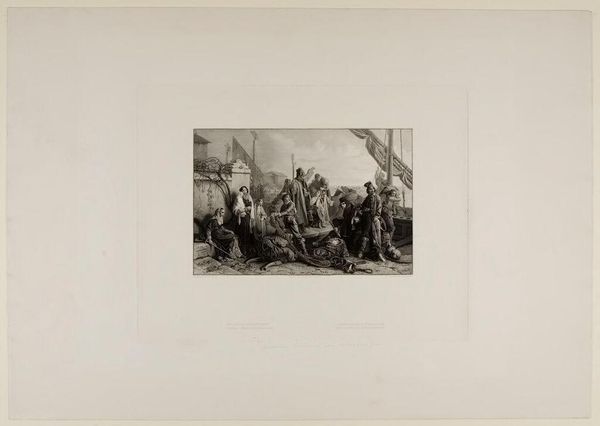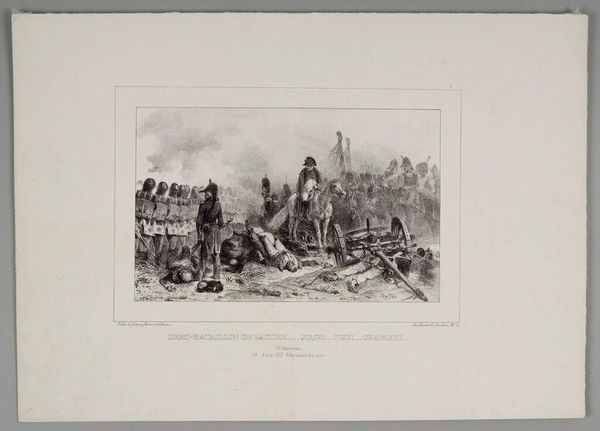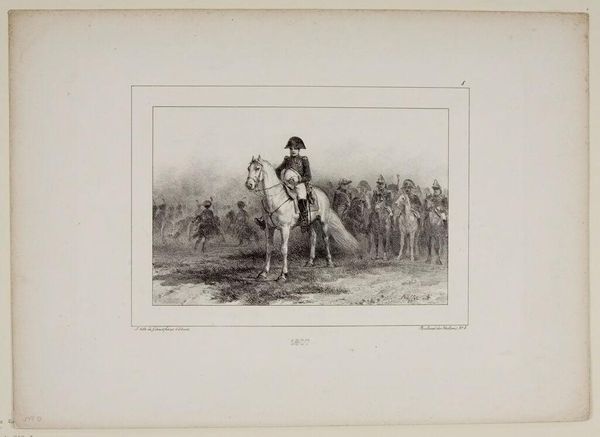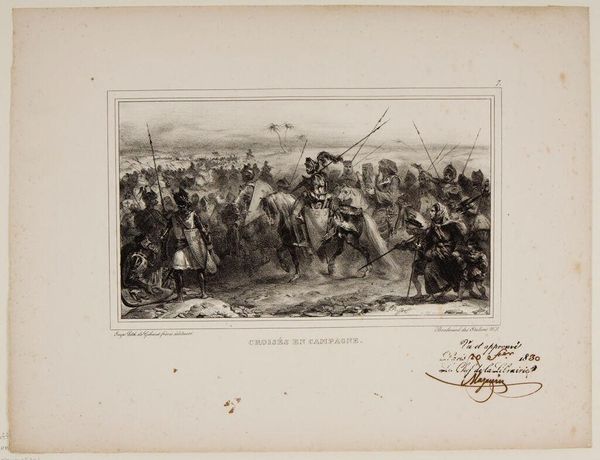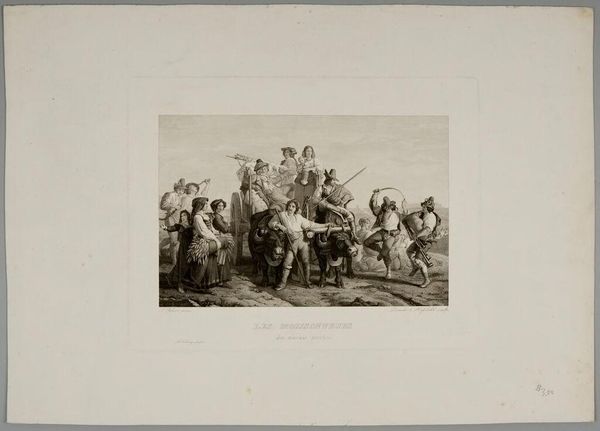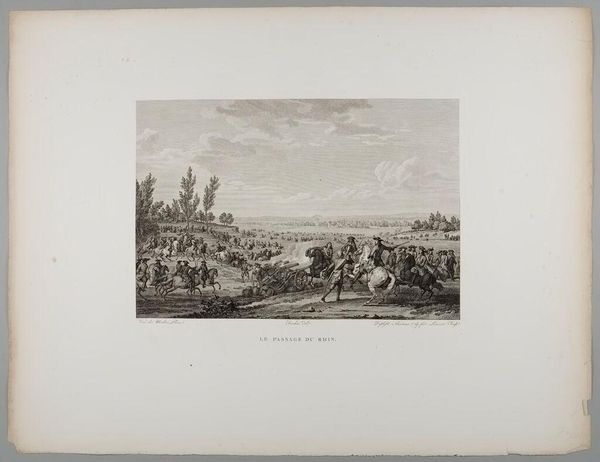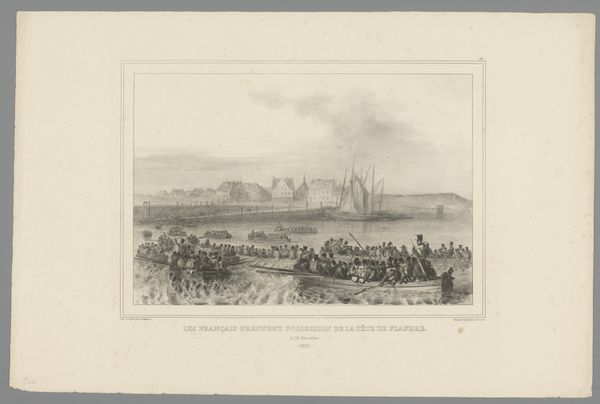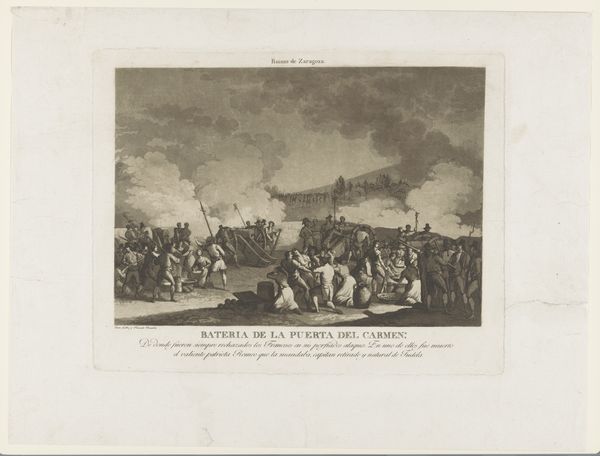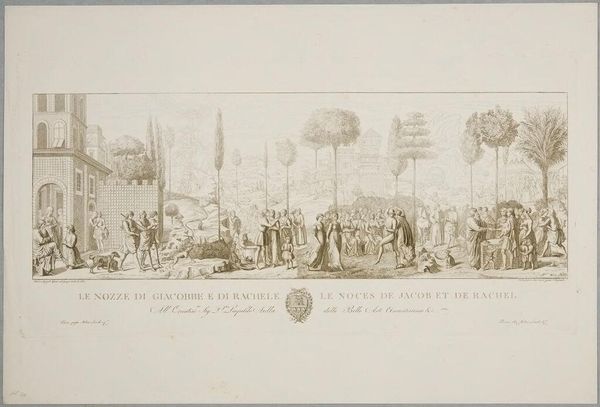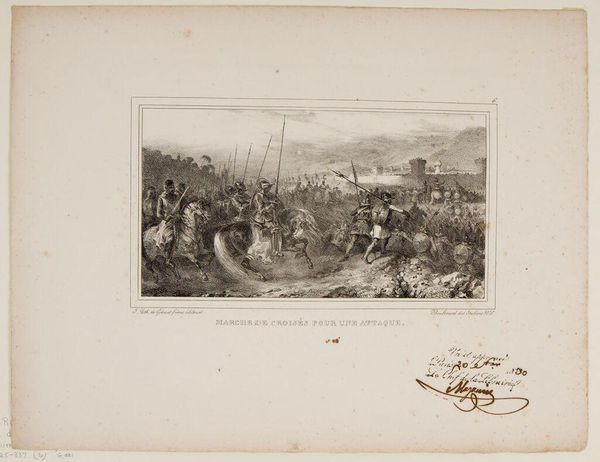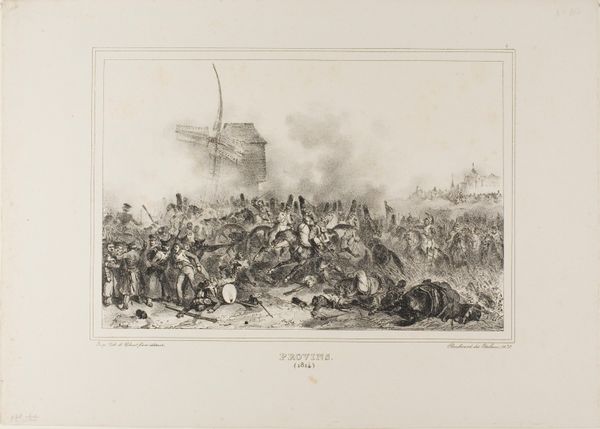
Copyright: CC0 1.0
Editor: This print, "Conquest of Holland, 1795," by Auguste Raffet, depicts a vast army in a stark, snowy landscape. The mood feels somber despite the title. What historical narratives do you see embedded in this work? Curator: This piece offers insight into the public perception of military campaigns. Raffet, though working later, evokes the visual language used to depict Napoleon's campaigns. The windmill, a Dutch symbol, becomes a silent witness to the French advancement. How does this imagery contribute to constructing a specific narrative about the conquest? Editor: It almost seems to downplay the violence, focusing instead on the sheer scale and the environment. Curator: Exactly. Raffet subtly shapes the viewer's understanding of the event through composition and emphasis. The romanticized depiction of military campaigns often served a political purpose. Editor: It's fascinating how art can both reflect and shape historical narratives. Curator: Indeed. Considering art within its socio-political context reveals its power to influence public memory and legitimize power.
Comments
No comments
Be the first to comment and join the conversation on the ultimate creative platform.
